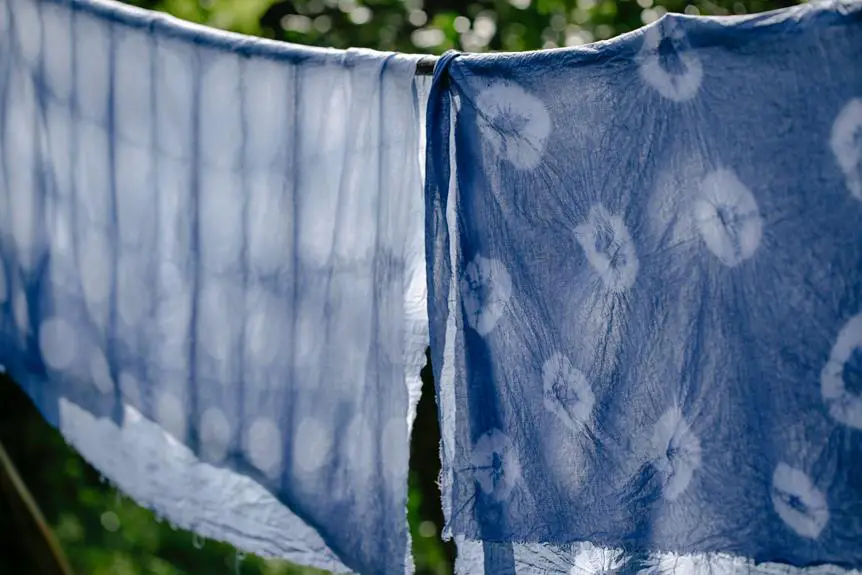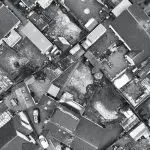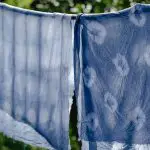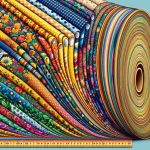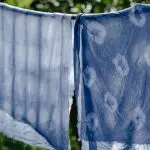Want to ensure your upholstery project goes smoothly? Calculating fabric yards may seem daunting, but with these five simple tips, you'll master the process in no time.
From measuring your furniture to factoring in pattern repeats and upholstery type, this guide will walk you through the key considerations.
By the end, you'll be equipped to calculate fabric yardage accurately and confidently, ensuring you have just the right amount of fabric for a flawless upholstery job.
Let's dive in and make the fabric calculation process a breeze!
Key Takeaways
- Accurate measurements of width, height, and depth are crucial when calculating fabric yardage for upholstery.
- Understanding pattern repeat is essential to ensure a seamless match at seams and corners and to account for any waste generated during cutting.
- The type of upholstery material and its durability influence the yardage needed, as different materials have varying thickness and stretch.
- Factoring in additional fabric needs such as design variations, fabric direction, trims, and accents is important to avoid running short on fabric.
Measure the Furniture
How do you accurately measure the dimensions of your furniture for upholstery fabric?
It's crucial to start with measuring accuracy to ensure you get the right amount of fabric. Begin by measuring the width, height, and depth of each piece of furniture.
For sofas and chairs, consider the shape of the furniture, particularly any curves or angles, as this will affect the amount of fabric needed.
Additionally, take into account the fabric stretch. If you're working with a stretchy fabric, you may need less yardage compared to a non-stretch fabric.
Understanding the grain direction of the fabric is also essential. The direction of the fabric's grain can affect the overall look and durability of the upholstery.
Once you have accurate measurements and have factored in the shape, fabric stretch, and grain direction, you'll be well-equipped to calculate the fabric yards needed for your upholstery project.
Consider Pattern Repeat
Have you considered how the pattern repeat of the fabric will impact the amount of yardage needed for your upholstery project? Pattern repeat refers to the distance between one point in a pattern and the next identical point. When choosing a fabric for upholstery, understanding the pattern repeat is crucial for accurately calculating the required yardage.
Here's what you need to know about pattern repeat and fabric selection:
- Pattern Matching: If your upholstery project involves patterns or prints, you'll need to ensure that the pattern matches up seamlessly at the seams and corners. This often requires additional fabric to match the patterns correctly, especially for larger furniture pieces.
- Fabric Selection: Different fabrics have varying pattern repeats, and this can significantly impact the yardage needed. For instance, a fabric with a large pattern repeat may require more yardage to ensure proper pattern alignment.
- Complexity Adds Yardage: Intricate patterns or those with a large repeat can add complexity to the cutting and matching process, resulting in the need for extra fabric to accommodate these challenges.
- Waste Consideration: When pattern matching, there may be more waste generated from cutting the fabric to ensure pattern alignment, so it's essential to consider this when calculating yardage.
Understanding pattern repeat and its impact on fabric selection is essential for achieving professional-looking upholstery with seamless pattern matching.
Account for Upholstery Type
Consider the specific upholstery type when calculating fabric yards to ensure you account for any unique requirements in the yardage needed. Upholstery material and fabric durability are crucial factors that influence the amount of fabric yards necessary for your project. Different upholstery materials have varying thickness and stretch, affecting how they cover furniture pieces. Additionally, the durability of the fabric impacts the longevity of the upholstery, influencing the amount needed to ensure longevity and wear.
To illustrate the impact of upholstery type on fabric yardage, consider the following table:
| Upholstery Material | Fabric Durability | Fabric Yards Needed |
|---|---|---|
| Cotton | Low | 12 |
| Leather | High | 8 |
| Linen | Medium | 10 |
| Velvet | High | 9 |
| Polyester | Medium | 11 |
As shown in the table, the fabric yards needed vary based on the upholstery material and fabric durability. By considering these factors, you can accurately calculate the fabric yards required for your upholstery project, ensuring a perfect fit and longevity.
Factor in Additional Fabric Needs
To determine the additional fabric needs for your upholstery project, carefully assess potential design variations and account for any pattern matching or fabric direction requirements. These factors can significantly impact the amount of fabric required.
Here are some essential points to consider when factoring in additional fabric needs:
- Pattern Matching: If your upholstery fabric has a specific pattern that needs to be matched at seams or corners, you'll need extra yardage to ensure the pattern aligns correctly. This is especially crucial for large or intricate patterns.
- Fabric Direction: Certain fabrics have a distinct direction, such as a nap or grain. Upholstering pieces that require fabric to run in the same direction will increase the yardage needed. Be mindful of this when calculating your fabric requirements.
- Trim and Accents: If your project involves adding trims, fringes, or accents, you'll need to allocate extra fabric for these details. These elements can elevate the overall look but require additional yardage.
- Repeats and Alignments: Take into account the fabric's repeat length and how it aligns with the furniture piece. Matching repeats and ensuring proper alignment may necessitate ordering more fabric.
Considering these factors when calculating additional yardage will help you avoid running short on fabric and ensure a successful upholstery project.
Calculate Fabric Yardage
Assess the dimensions of your furniture piece to accurately determine the required fabric yardage for your upholstery project. To calculate fabric yardage, measure the length, width, and height of each section of the furniture. Use these measurements to create a simple sketch, breaking down the piece into its basic shapes. Then, calculate the fabric yardage required for each section using the table below as a guide. Keep in mind the fabric wastage, as patterns and cuts can result in unused fabric. Additionally, consider the fabric cost, as different materials come at varying prices per yard. By carefully calculating the fabric yardage, you can minimize wastage and accurately estimate the cost of your upholstery project.
| Furniture Section | Length (inches) | Width (inches) | Fabric Yardage Required |
|---|---|---|---|
| Back | |||
| Seat | |||
| Arms | |||
| Skirt/Bottom |
Once you have determined the fabric yardage for each section, simply add them together to find the total fabric yardage needed for your upholstery project.
Frequently Asked Questions
Can I Use the Same Yardage Calculation for Different Types of Upholstery Fabric, Such as Leather, Velvet, or Cotton?
Yes, you can use the same yardage calculation for different types of upholstery fabric, such as leather, velvet, or cotton. Consider fabric durability and maintenance requirements when choosing the right material for your upholstery project.
How Can I Determine the Pattern Repeat of a Fabric if It Is Not Labeled on the Bolt?
To determine the pattern repeat of unlabeled fabric, lay it out and measure the distance between the pattern's starting point. For fabric yardage adjustment, consider the pattern repeat when calculating how much you need for your upholstery project.
What Should I Do if the Fabric I Want to Use Has a Limited Availability or Is on Backorder?
If the fabric you want is limited or on backorder, dealing with delays can be frustrating. However, finding alternatives is the key. Look for similar fabrics in terms of color, texture, and durability to ensure a suitable replacement.
Are There Any Special Considerations for Calculating Fabric Yardage for Furniture With Non-Traditional Shapes or Dimensions?
When dealing with irregular shapes or custom dimensions for furniture upholstery, it's crucial to carefully measure and account for unique materials. Consider alternative fabric options if there's limited availability or backorders to ensure a seamless project.
How Can I Account for Fabric Shrinkage or Stretching When Calculating Yardage for Upholstery?
When calculating fabric yardage for upholstery, account for fabric shrinkage by adding extra yardage (typically 10-15%) to your measurements. To adjust for stretching, consider the fabric's elasticity and compensate in your yardage calculation.
- An Overview of China’s Role in Apple’s Product Fabrication - June 20, 2025
- The Process of Sourcing and Importing Textiles From China - June 20, 2025
- Custom Metal Part Fabrication: Why Businesses Choose China - June 20, 2025

